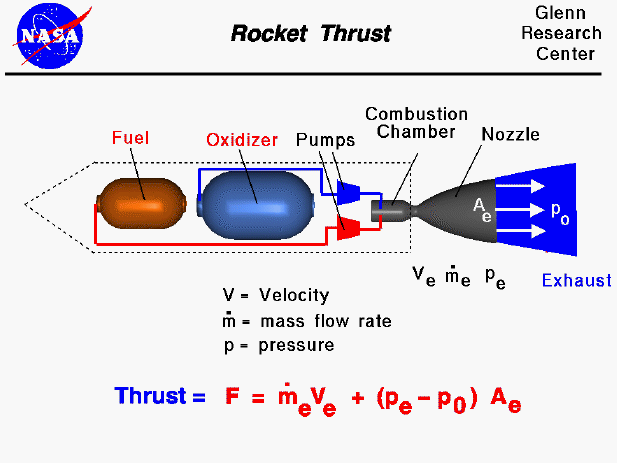
The awe-inspiring sight of a rocket soaring into the skies, leaving a trail of fire and smoke in its wake, is a testament to human innovation and scientific achievement. Rockets are marvels of engineering, capable of reaching incredible speeds and altitudes. But have you ever wondered how these powerful machines generate the immense thrust required to break free from Earth’s gravitational pull and venture into space? In this comprehensive article, we will explore the fascinating science behind rocket propulsion.
The Basic Principle: Newton’s Third Law
The foundation of rocket propulsion lies in Sir Isaac Newton’s third law of motion, which states that “for every action, there is an equal and opposite reaction.” In the context of rocketry, this law means that when a rocket expels mass in one direction (action), it experiences a force pushing it in the opposite direction (reaction). This fundamental principle is what enables rockets to move forward and generate thrust.
Components of a Rocket
To understand how rockets generate thrust, it’s essential to know the key components of a typical rocket:
1. Propellant: The fuel and oxidizer mixture that provides the necessary chemical reaction for propulsion. Common propellants include liquid hydrogen and liquid oxygen (used in the Space Shuttle) and kerosene and liquid oxygen (used in the Saturn V rocket).
2. Rocket Engine: The engine is responsible for burning the propellant and expelling the exhaust gases at high speeds. There are two primary types of rocket engines:
- Liquid Rocket Engines: These engines use liquid propellants stored in separate tanks and mix them in a combustion chamber. The resulting chemical reaction generates a high-velocity exhaust that is expelled through a nozzle.
- Solid Rocket Engines: Solid rockets have propellants in a solid state. The combustion occurs on the surface of the propellant, and the exhaust gases are expelled through a nozzle.
3. Nozzle: The nozzle is a crucial component of the rocket engine. Its shape is designed to accelerate the exhaust gases to supersonic speeds as they exit the engine. This acceleration generates a powerful thrust in the opposite direction.
4. Payload: The payload is the object or instruments that the rocket is designed to carry, such as satellites, scientific instruments, or astronauts.
The Process of Rocket Propulsion
Now, let’s break down the process of how rockets generate thrust:
- Fuel Combustion: In the rocket engine, the propellant undergoes combustion. In the case of liquid rocket engines, the fuel and oxidizer are mixed and ignited in the combustion chamber. In solid rocket engines, the solid propellant burns from the inside out.
- Exhaust Gas Generation: The combustion of propellant results in the creation of hot, high-pressure exhaust gases. These gases consist of various molecules, such as water vapor, carbon dioxide, and unburned fuel components, depending on the propellant used.
- Nozzle Acceleration: The exhaust gases are directed towards the nozzle, which is specifically designed to accelerate them to supersonic speeds. The nozzle’s shape and size are critical in maximizing the velocity of the exhaust gases.
- Equal and Opposite Reaction: As the high-velocity exhaust gases are expelled out of the nozzle in one direction, the rocket experiences an equal and opposite reaction in the opposite direction. This reaction force is the thrust that propels the rocket forward.
- Continual Propulsion: Rocket engines continue to burn propellant and expel exhaust gases, providing continuous thrust. To reach space, rockets must maintain this thrust long enough to overcome Earth’s gravitational pull and achieve the required velocity to enter orbit or travel to other celestial bodies.
Challenges and Advancements in Rocket Propulsion
Rocket propulsion is not without its challenges. Rockets require vast amounts of propellant, which makes them incredibly heavy. This necessitates further propellant for propulsion, leading to a classic engineering problem known as the “rocket equation.” To overcome these limitations, scientists and engineers continually seek innovations in propulsion technology, such as more efficient engines, new propellant formulations, and alternative methods like ion propulsion.
In conclusion, the process of how rockets generate thrust is rooted in Newton’s third law of motion and the principles of combustion and fluid dynamics. Rocket engines, whether liquid or solid, are finely tuned machines designed to harness the power of chemical reactions and convert them into propulsive force. As technology advances, our understanding of rocket propulsion continues to grow, opening up new frontiers of exploration and discovery in the vast expanse of space.
